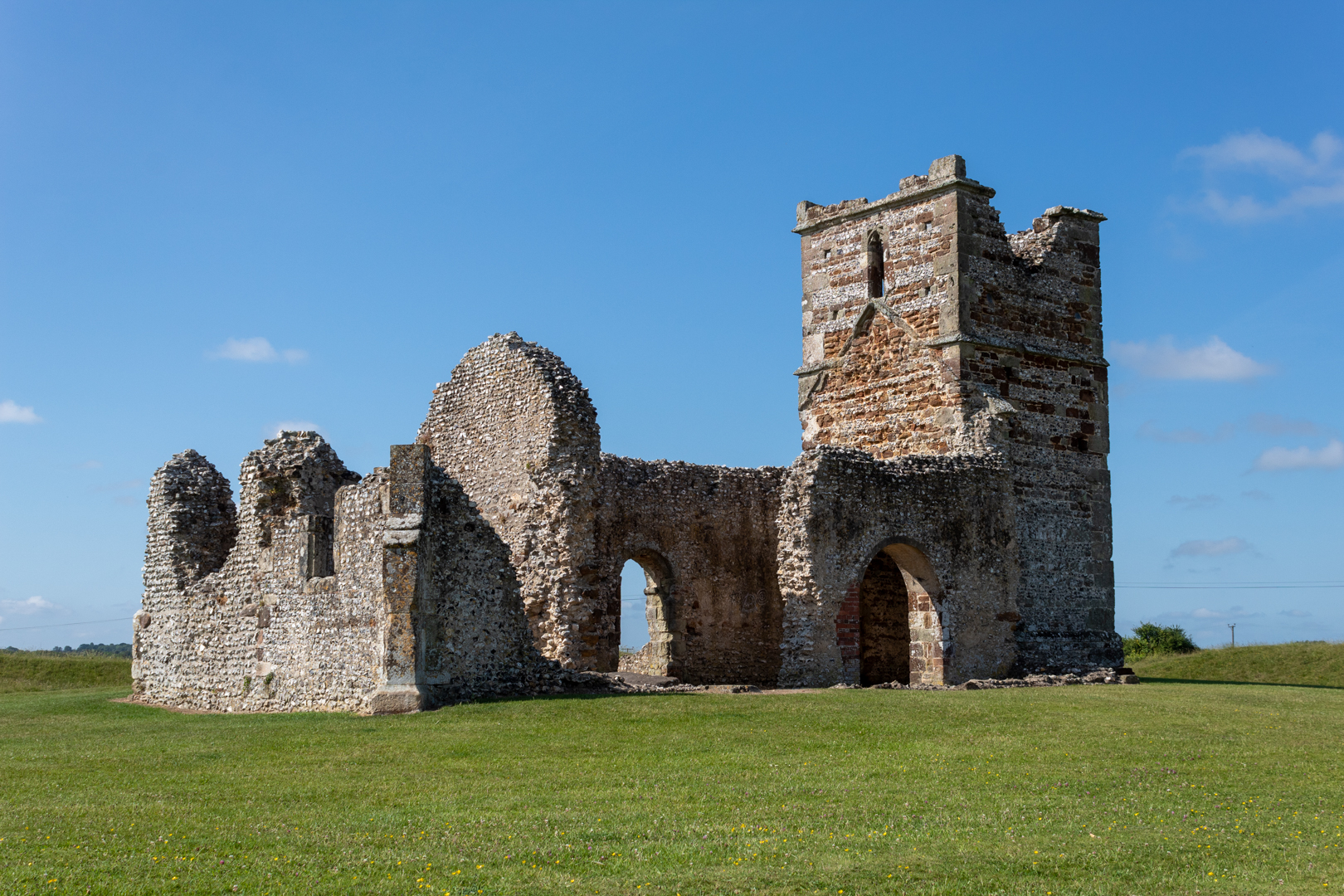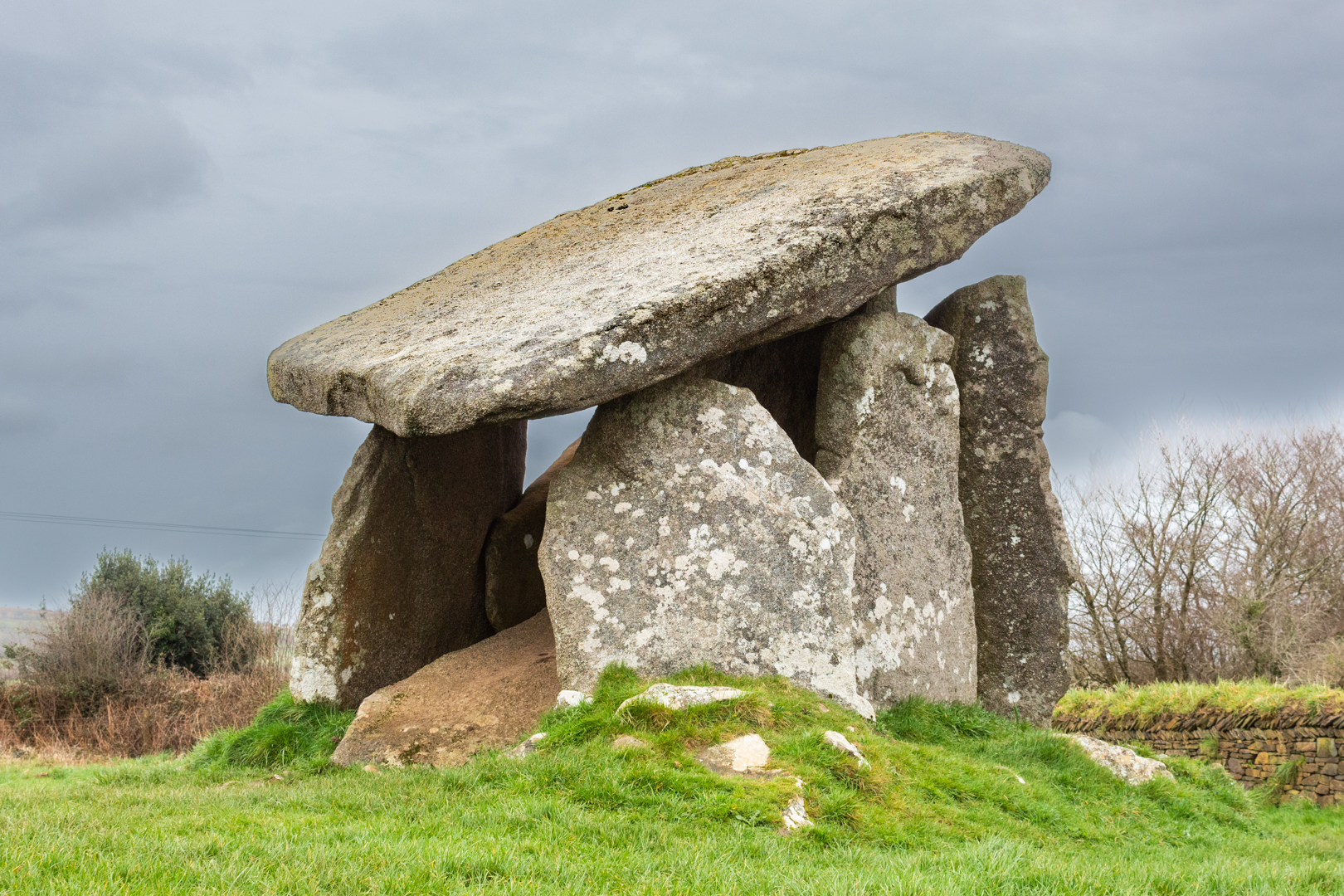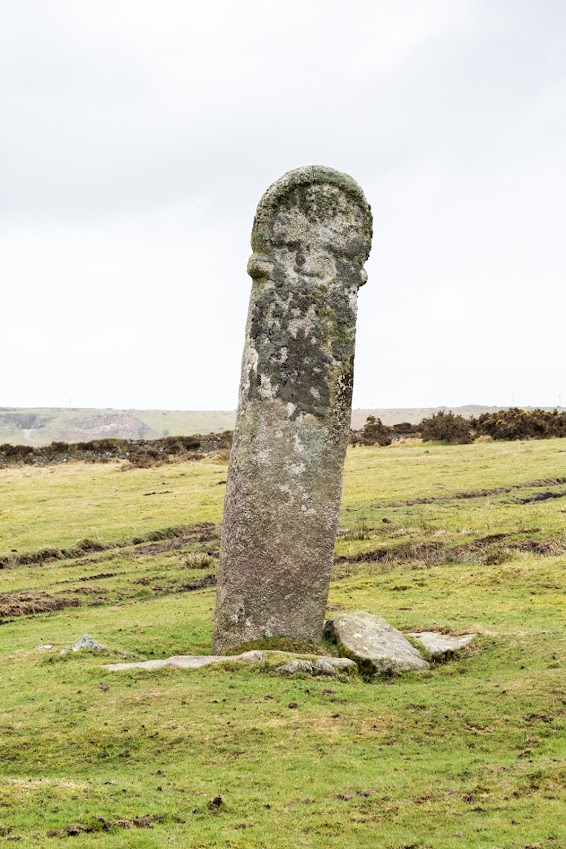The Neolithic Heart of the Great Orme
Llety'r Filiast is an important archaeological, cultural, and historical site,
prominently recognized as a Neolithic burial chamber located on the Great Orme, near Llandudno.
Visit Date: April 2024
 |
| Llety'r Filiast South View |
Llety'r Filiast is classified as a Neolithic chambered cairn, or portal dolmen, which was commonly used during the Neolithic era, approximately between 6,000 and 4,500 years ago.
 |
| Click on any image to enlarge |
The chamber itself measures about 2.1 meters long and 1.5 meters high, surrounded by the remains of a cairn that once covered it. Originally, this cairn was believed to be around 30 meters long and 10 meters wide, with a roughly egg-shaped form, though much of the stone has been removed over time. The space under the horizontal capstone likely contained the remains of significant community figures or family members, possibly cremated.
While it is unclear whether the chamber featured a visible entrance or was entirely enclosed, structures like this are thought to hold deeper symbolic meanings, possibly serving as "portals to another world" or relating to ancient creation myths.
The construction of elaborate burial chambers like Llety'r Filiast reflects a critical phase in human development—the Neolithic era. During this time, people transitioned from nomadic hunter-gatherers to settled agricultural communities, enabling them to allocate resources to significant projects, such as building burial sites, as they were no longer solely focused on sourcing food.
A geophysical survey conducted by Jo Jones in 1996 at the "Cromlech Field," where Llety'r Filiast is situated, revealed traces of an outer ring ditch and potential postholes, indicating the presence of a henge monument associated with the site. Nearby finds include Romano-British ceramic material unearthed close to the chamber, suggesting later activities in the area.
 |
| Llety'r Filiast (Viewed from East) |
Llety'r Filiast is located near the Great Orme, a limestone headland on the north coast of Wales, northwest of Llandudno. The Great Orme, referred to as Cyngreawdr Fynydd by the 12th-century poet Gwalchmai ap Meilyr, derives its English name from the Old Norse word for "sea serpent."
 |
| Llety'r Filiast (Viewed from the North) |
Nearby are the Orme copper mines, discovered in 1987 during landscaping efforts on the Great Orme. These copper mines represent one of the most remarkable archaeological finds in recent history, dating back 4,000 years to the Bronze Age, and they have reshaped our understanding of the ancient people of Britain and their structured societies, well before the Roman invasion. While Llety'r Filiast predates these mines, it is also geographically close to other prehistoric structures, such as Neolithic roundhouses on the Great Orme. Local tradition suggests that a trackway from the mines may have passed by the cromlech, indicating that the dolmen might have served as a "guardian" of the mines' entrance. This site is part of a larger landscape rich in early human activity on the Great Orme, which includes evidence of Mesolithic flint tools and Neolithic implements found in a nearby valley.
 |
| Llety'r Filiast (Viewed from the west) |
The name Llety'r Filiast translates to "The Lair of the Greyhound Bitch" or "Lodging of the Greyhound Bitch." This name is shared with other tombs across Wales, although no specific story survives to explain its significance for this particular site. "Filiast" is commonly interpreted as a reference to a female greyhound or grey-colored hound. Some theories connect these sites to the Celtic goddess Cerridwen, whose symbols included a "milast," a form she is believed to have taken during initiation rituals. Another interpretation links "milast" to Camulus (Mars), to whom greyhound bitches and horses were dedicated. Folklore also associates phantom guard dogs with "the bowels of the earth," drawing similarities to Cerberus guarding the underworld or to the "Bar Guest" of the Derbyshire Mines. This connection may provide insight into the name "Lair of the Greyhound Bitch," suggesting that such sites were viewed with a mix of awe and fear, relating to their mystical or protective associations with the underworld.
Footer:
Visit Information: -
Google Reference: -
What Three Words reference: -
OS Details: -
SH 77216 82940 elevation 447
Additional information.
Visiting is easy. There is a small place to park at the side of the field (53.32897301962271, -3.844905483766489) but this is a small country lane really.
The most satisfying way to visit would be to take a ride on the Great Orme Tramway, (53.32727640960437, -3.835464572077922) which is a funicular railway. Get off at the halfway stage and you can walk to the site, however the terrain is quite steep.
There are lots of facilities in the Town.































